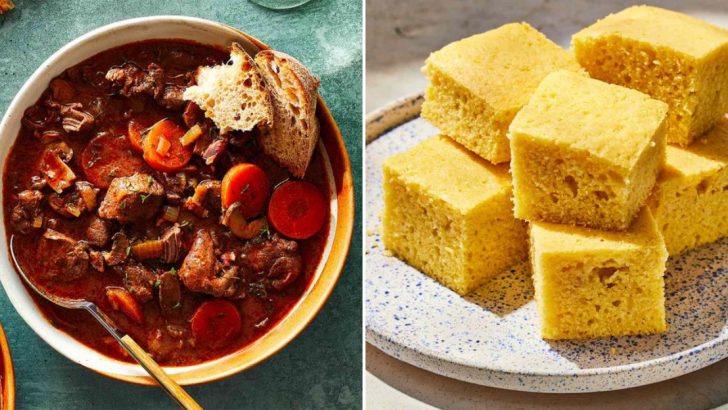Well, hello there, food adventurer!
Buckle up, because we’re about to take a flavorful trip back to the 13 Colonies, where meals were hearty, and the bread was probably drier than your grandma’s sense of humor. Stews that could feed an army, simple bread with more personality than some people—each bite tells a story.
Ready to dive into the past before the pilgrims start side-eyeing us!
1. Cornbread

Cornbread is undoubtedly waiting if you ever find yourself exploring a colonial kitchen. Because of its flexibility, this staple—made from ground cornmeal—was a favorite. Corn became a daily bread substitute when it was plentiful.
It smelled of warmth and pragmatism and was frequently baked in cast iron pans. It’s interesting to note that cornbread’s adaptability made it a timeless staple that went well with any meal.
2. Johnnycakes

How about a taste of history with johnnycakes? These flatbread cakes, crafted from cornmeal, were a colonial favorite. Cooked on open griddles, they were easy to prepare.
Their portability made them ideal for travelers and traders. With a texture like pancakes, they could be sweetened with honey or enjoyed plain. Hence, johnnycakes stood as a testament to colonial ingenuity.
3. Succotash

Where harvest festivals occurred, succotash often graced the table. This vibrant dish of corn and beans, sometimes enriched with meats or squash, celebrated the season’s bounty. It held nutritional value and a hearty taste, making it a beloved side dish.
Succotash captured the essence of collaboration between Native Americans and colonists, reflecting shared agricultural practices.
4. Hasty Pudding
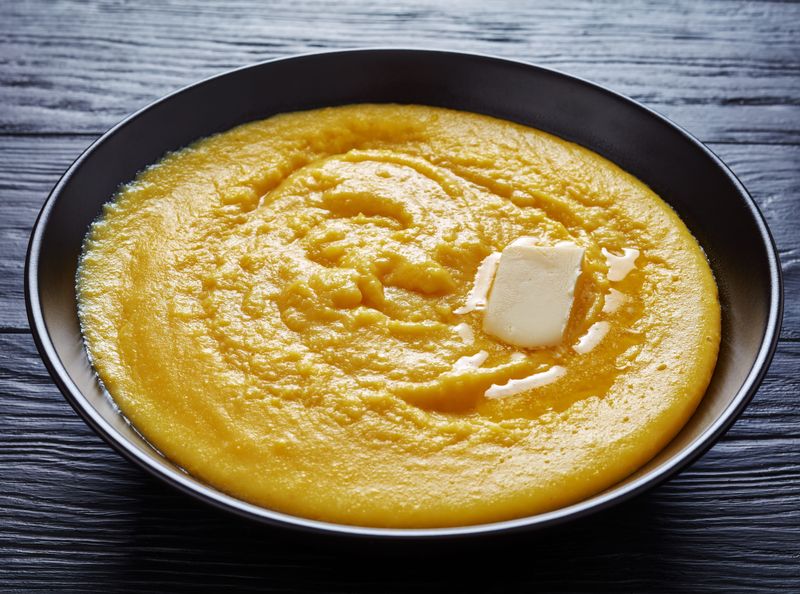
Hasty pudding warmed many colonial hearts on cold evenings. This straightforward food, which was made from cornmeal cooked in water, provided solace and nourishment. The number of varieties varied according to the ingredients (such as molasses or milk) that were available.
Its adaptability was demonstrated by the fact that its sweetened variant frequently became a dessert. Indeed, a good example of improvising was the hasty pudding.
5. Salted Pork
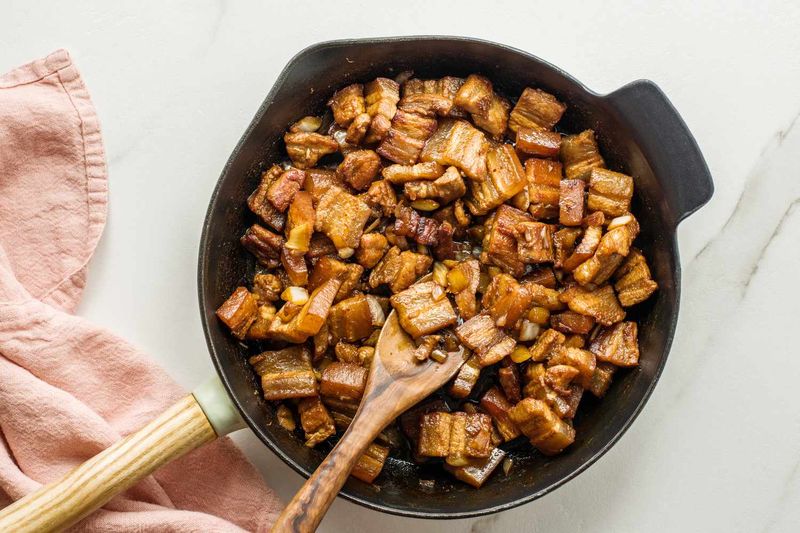
Salted pork was an indispensable part of colonial diets. This preservation method ensured meat was available through harsh winters. Often boiled or added to stews, it contributed much-needed protein and flavor.
However, its saltiness required careful preparation. Colonists learned to balance flavors, making salted pork a cherished ingredient. Hence, this method reflected ingenuity in food preservation.
6. Apple Cider

When autumn leaves fell, apple cider flowed freely. Fermentation transformed apples into this refreshing drink, enjoyed by colonists of all ages. It was a safer alternative to water, often contaminated. A staple at social gatherings, cider warmed spirits and encouraged camaraderie.
Its versatility allowed it to be spiced or mulled, making it a beloved colonial beverage.
7. Indian Pudding
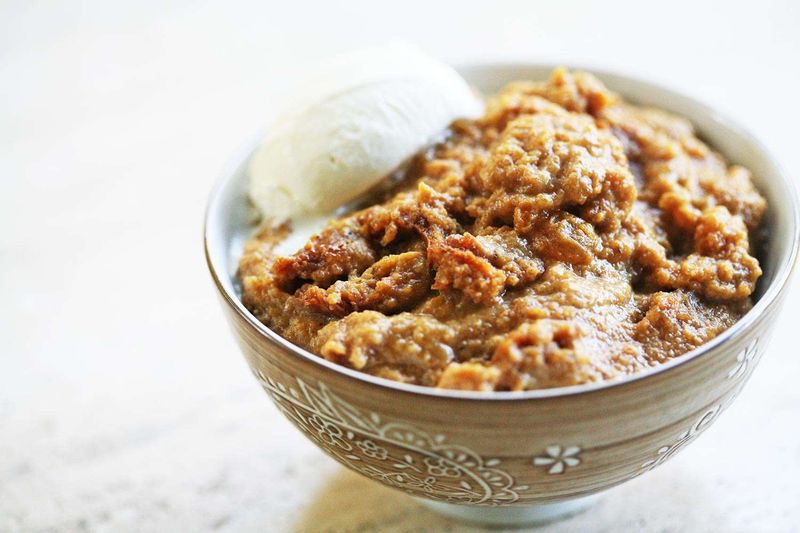
Furthermore, Indian pudding offered a sweet escape from daily routine. This dessert, adapted from Native American recipes, combined cornmeal, milk, and molasses.
Slowly baked, its rich, comforting flavor became a favorite. Its texture, akin to custard, provided a delightful end to meals. Indian pudding was more than a treat; it was a cultural fusion on the colonial table.
8. Clam Chowder
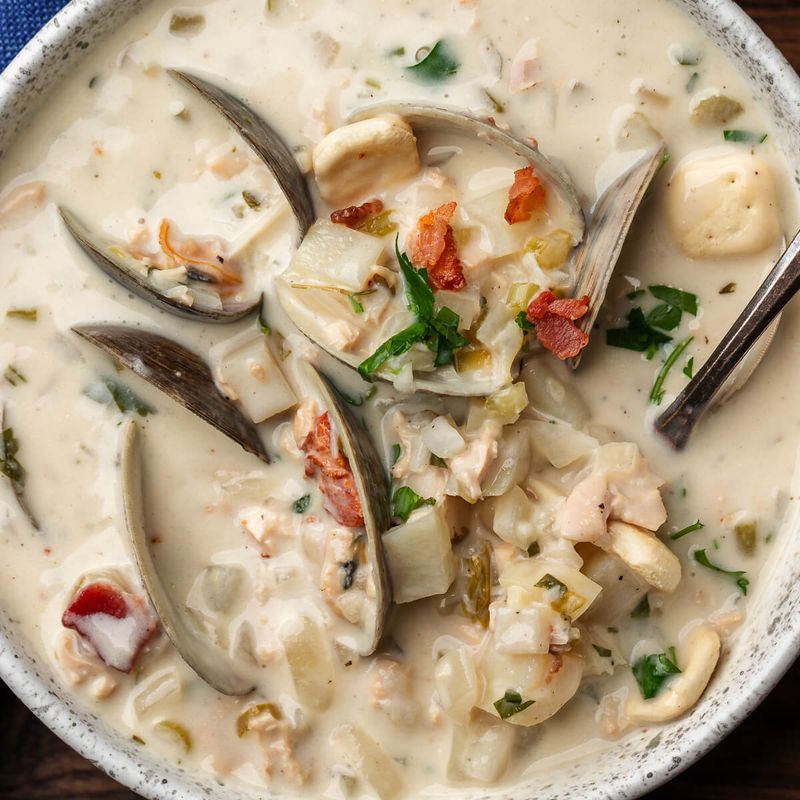
By the sea, clam chowder was a maritime masterpiece. This savory soup, brimming with clams, potatoes, and sometimes salt pork, showcased New England’s bounty. It was a hearty meal, offering warmth and nourishment after a day at sea.
With each spoonful, one tasted the ocean’s essence. Clam chowder became a symbol of coastal culinary tradition.
9. Molasses Cookies

Molasses cookies added sweetness to colonial afternoons. These spiced treats, enriched with the deep flavor of molasses, were beloved by many. Whether served with tea or enjoyed alone, they offered comfort. Where ingredients were scarce, these cookies demonstrated creativity.
Their chewy texture and rich taste made them a cherished snack, bridging the gap between simple and sweet.
10. Venison Stew
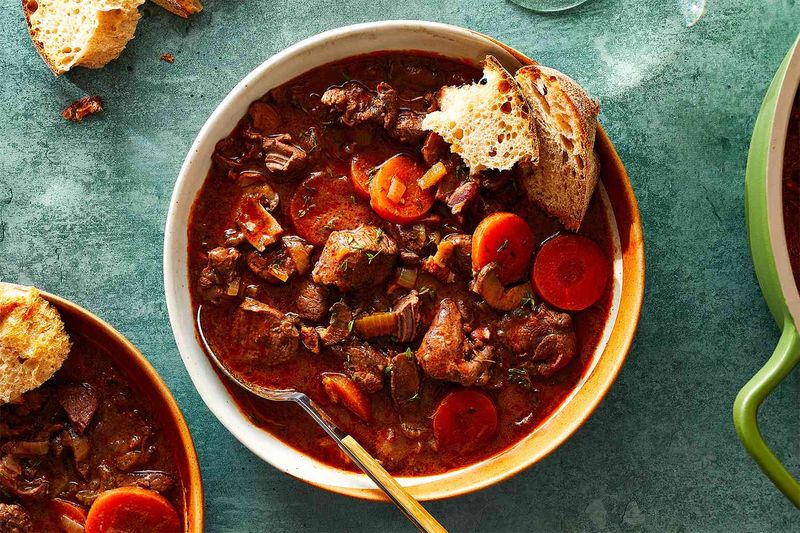
In the forests, venison stew simmered, filling the air with its rich aroma. Made with deer, root vegetables, and herbs, it was a nutrient-rich meal.
Hunters brought back venison, ensuring the stew’s presence on tables. Its long cooking time allowed flavors to meld, creating a satisfying dish. Venison stew, indeed, was a celebration of the hunt’s success.
11. Brown Bread
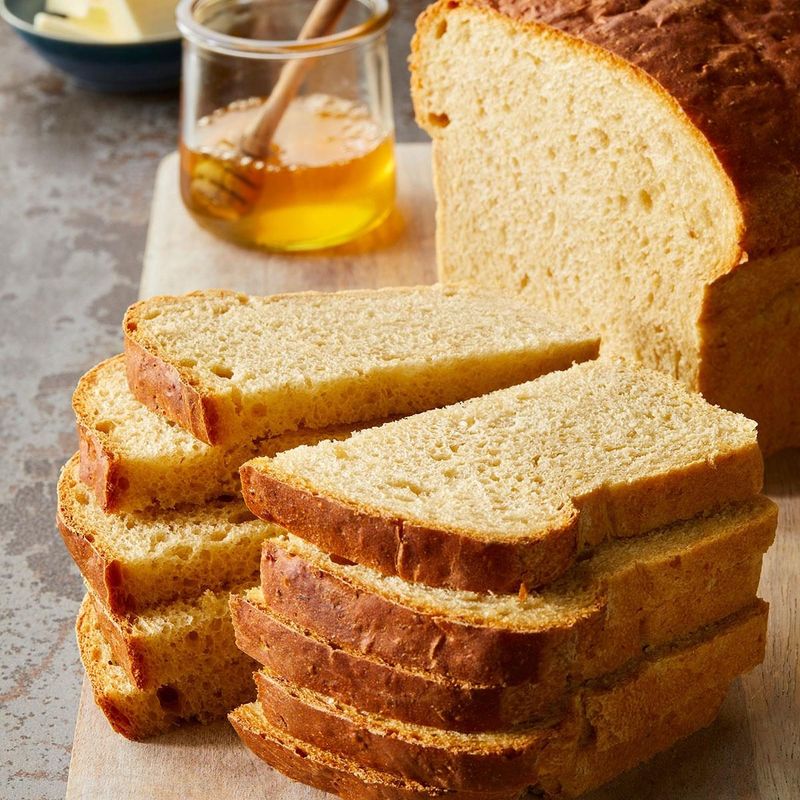
Brown bread was a hearty staple in the colonial diet. Made with rye and cornmeal, it differed from the usual white bread. Baked slowly, its dense texture complemented soups and stews.
The bread’s slight sweetness, often from molasses, added a delightful contrast. For colonists, brown bread symbolized the blending of available grains into everyday sustenance.
12. Maple Syrup
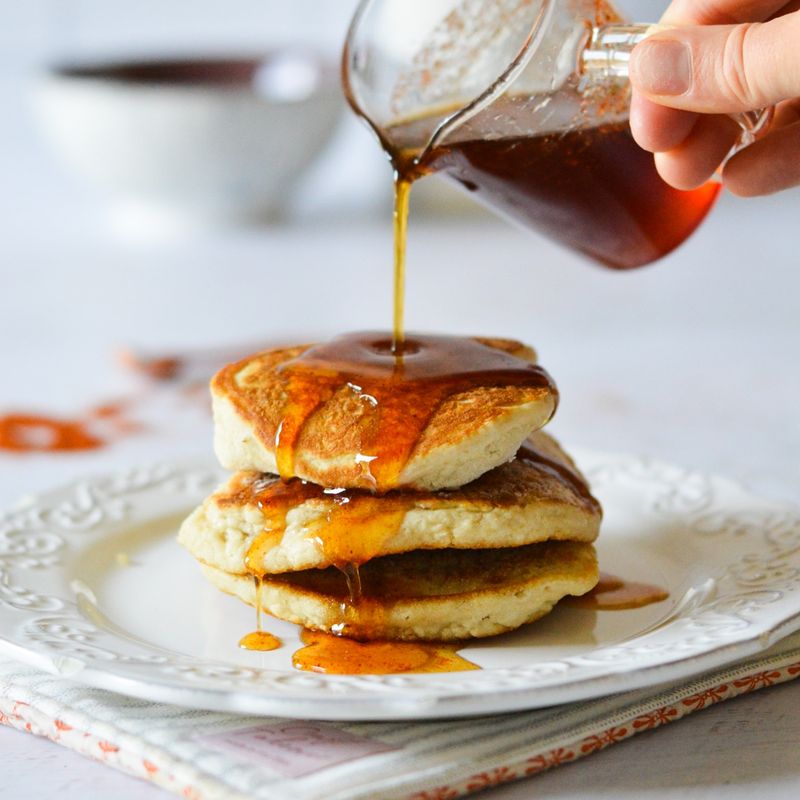
During sugaring season, maple syrup was a golden delight. Colonists tapped maple trees, boiling sap into syrup over open fires. Its sweet, caramel flavor enhanced pancakes, porridges, and desserts. As a local sweetener, it was both a treat and a necessity.
Maple syrup not only flavored food but also connected people to the land and its bounty.
13. Fish Pie
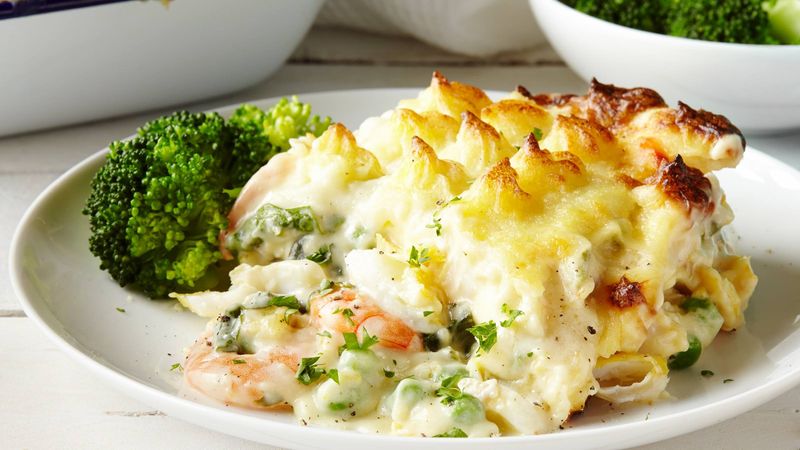
Wherever rivers flowed, fish pie found its place. This comforting dish combined flaky fish, often with peas and potatoes, under a pastry crust. Baking melded flavors beautifully, offering a hearty meal. It showcased the colonists’ ability to adapt and make the most of local produce.
Fish pie was not just food; it was an expression of resourcefulness and creativity.
14. Roast Goose
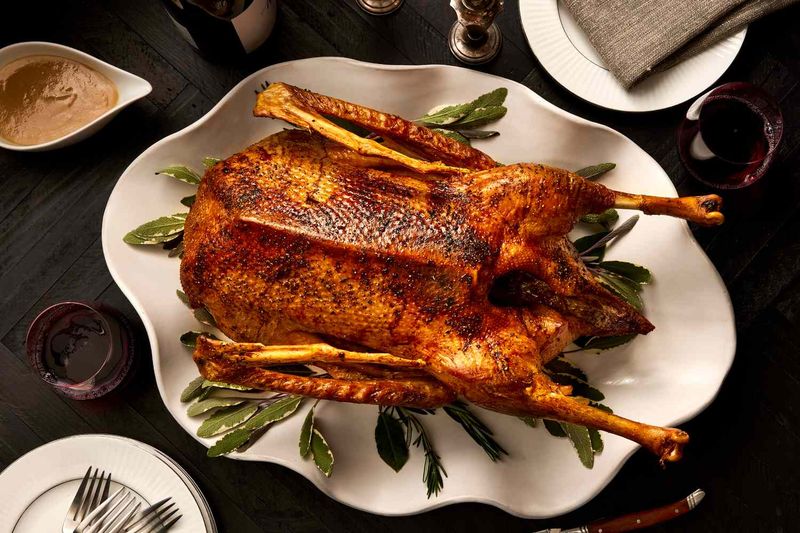
Roast goose was a festive favorite at colonial feasts. The bird, basted and slowly roasted, became a succulent centerpiece. Its flavorful meat and crispy skin made it irresistible.
Often reserved for celebrations, it brought families together around the table. Roast goose was more than a meal; it was a symbol of abundance and joy, marking the occasional indulgence.
15. Hominy
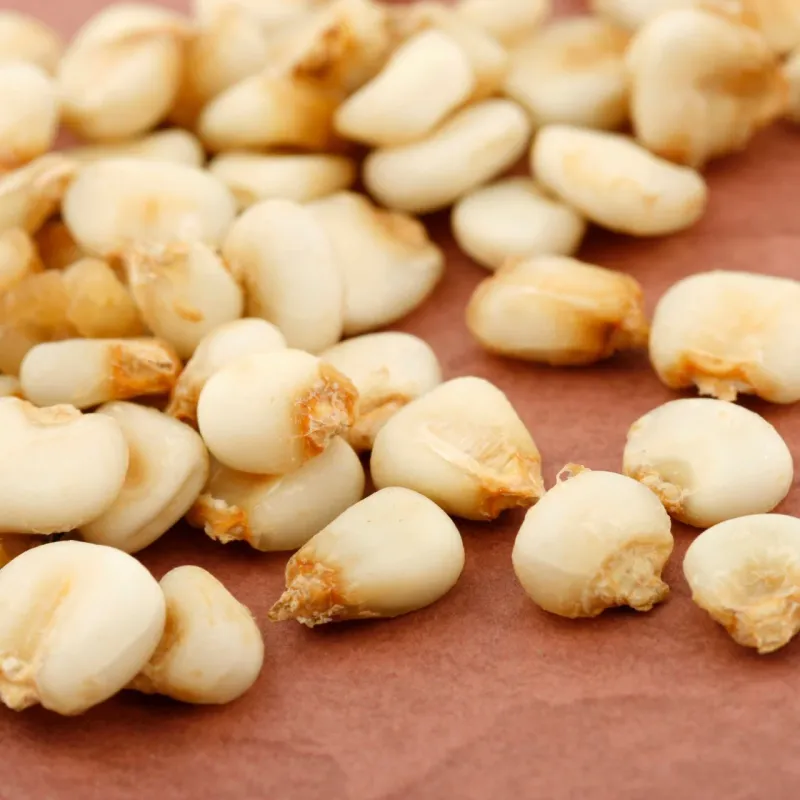
In many colonial kitchens, hominy simmered as a versatile dish. Made from corn kernels soaked in lye, it offered a unique texture. Its mild flavor allowed it to accompany meats or be transformed into grits.
Hominy represented the blending of Native American and European culinary traditions. As a nourishing staple, it was a testament to cultural exchange.
16. Baked Beans
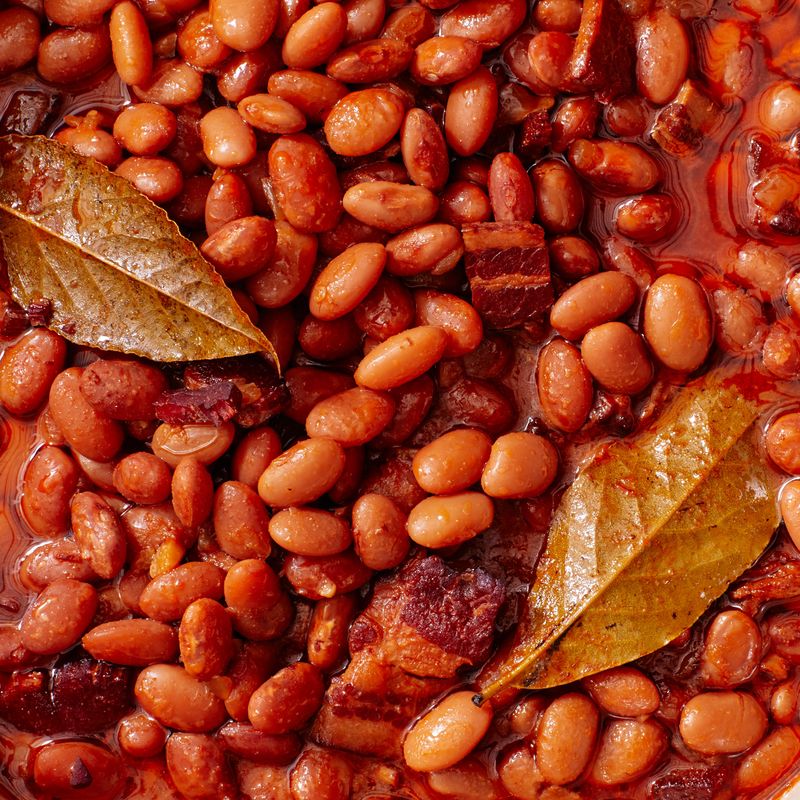
Baked beans, simmered to perfection, were a beloved colonial dish. Slow-cooked with molasses or maple syrup, their rich flavor offered warmth and comfort.
Often prepared for communal meals, they symbolized togetherness. Their simplicity belied a depth of taste, making them a staple. Baked beans captured the essence of colonial life: hearty, humble, and full of flavor.
17. Eel Pie

A surprising treat at colonial meals was eel pie. This delicious pie exceeded expectations with its thick sauce and delicate eel flesh. It demonstrated the colonists’ flexibility and openness to using available resources.
Flavors that were both surprising and satisfying were contained in the flaky shell of the pie. Despite being unorthodox, eel pie demonstrated the culinary inventiveness of the era.
18. Pumpkin Pie

Pumpkin pie brought a touch of sweetness to colonial gatherings. Made with spiced pumpkin puree and nestled in a flaky crust, it was a dessert to remember. Its warm spices, like cinnamon and nutmeg, enveloped diners in comfort.
Pumpkin pie was not just a treat; it was a celebration of the harvest and the simple pleasures it brought.
19. Squirrel Stew
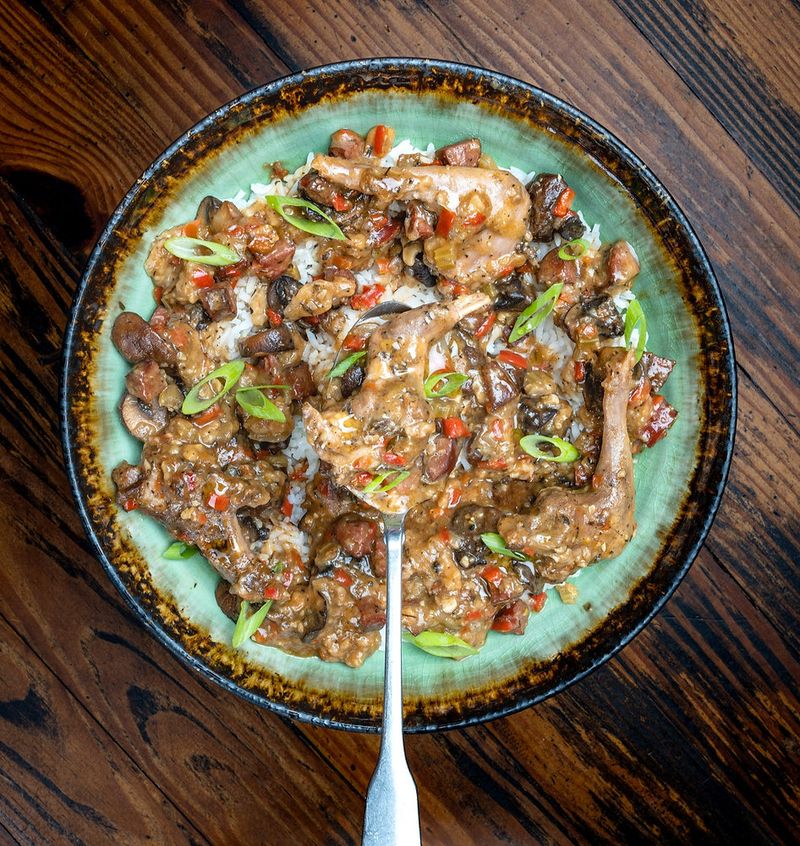
In the woods, squirrel stew simmered, offering a taste of frontier life. Made with hunted squirrel, vegetables, and herbs, it was a practical meal.
Hunters ensured its presence, often after a successful day in the forest. Its flavors, earthy and rich, provided sustenance and warmth. Squirrel stew, though humble, was a reminder of the resourcefulness required to thrive.
20. Posset
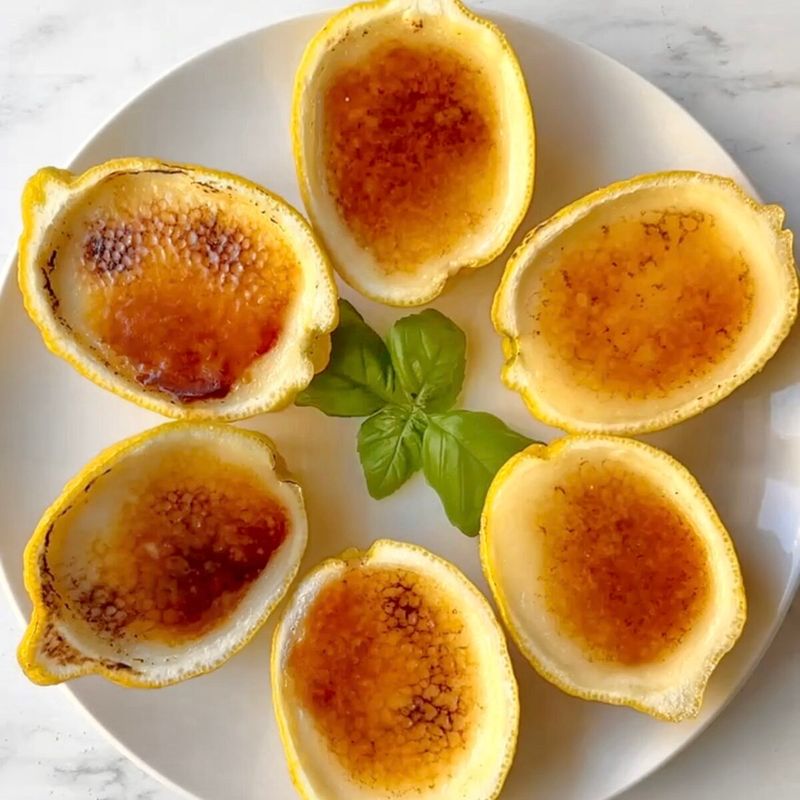
Posset, a creamy concoction, offered colonial comfort. Made with milk curdled by alcohol and spices, it was a warming drink on cold nights.
Served in elegant posset pots, it added a touch of sophistication to gatherings. Its smooth texture and spiced flavor made it a favorite evening treat. Posset was more than a drink; it was an experience of refined indulgence.
21. Oyster Stew
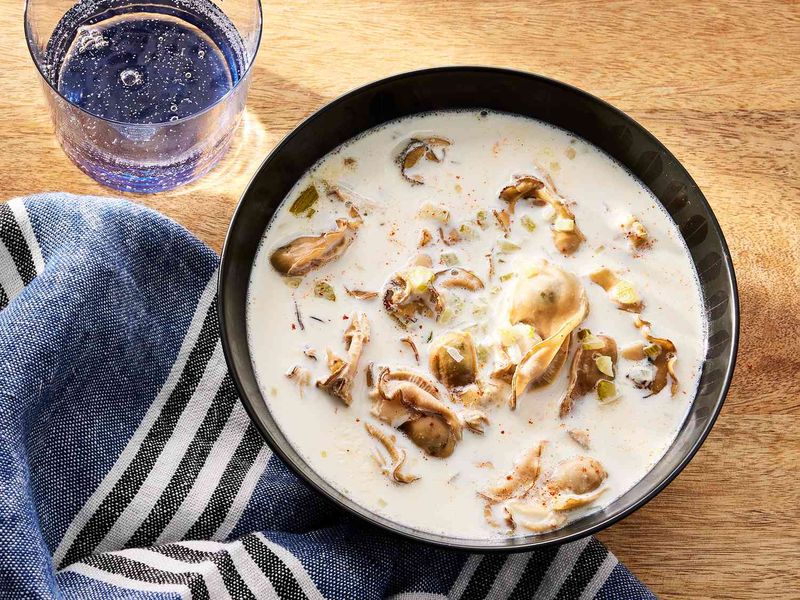
Along the coast, oyster stew was a briny delight. This creamy soup, rich with oysters and seasoned with pepper, celebrated the sea’s bounty. Served hot, it offered warmth and nourishment. Its simplicity highlighted the fresh, natural flavors of oysters.
Oyster stew not only satisfied hunger but also linked coastal communities to their maritime heritage.
22. Pease Porridge
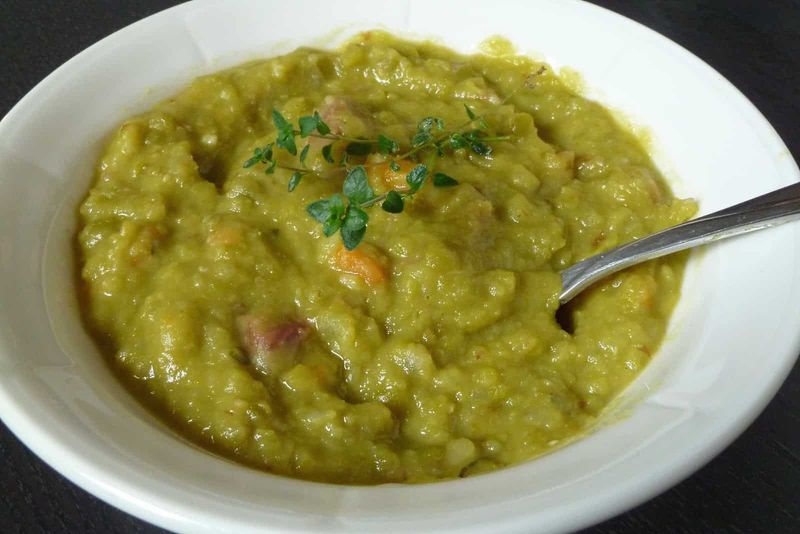
Pease porridge, a staple in colonial homes, was both simple and filling. Made from boiled peas, it offered a thick, nourishing meal. Its consistency varied from thick to thin, depending on preference. Often flavored with bacon or herbs, it provided a satisfying dish.
Pease porridge was a reminder of the practicality and heartiness of colonial cooking.
23. Mutton
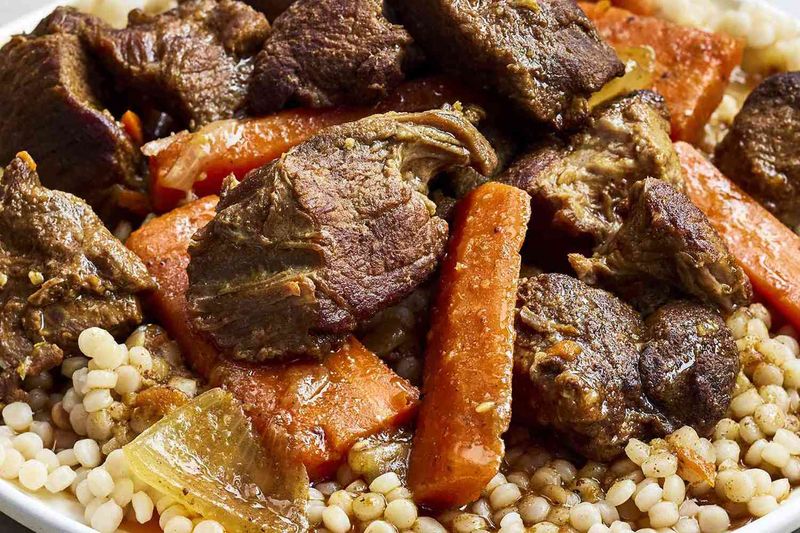
Many colonial feasts were adorned with succulent, delicious mutton. This lamb meal provided rich flavor and sustenance, and it was frequently roasted or stewed. Its various preparation demonstrated the diversity of cuisine.
It was a substantial supper, served with grain or vegetables. Mutton was more than just a food; it was evidence of how resource-efficient the colonists were.
24. Gooseberries
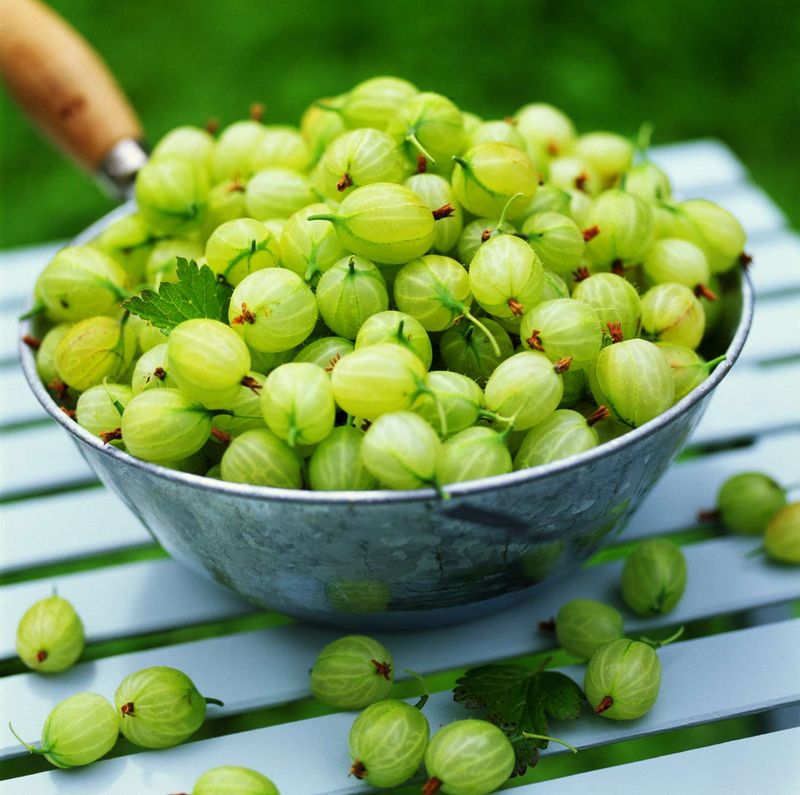
In colonial gardens, gooseberries thrived, offering tart and juicy bites. These small fruits, eaten fresh or cooked into tarts and jams, were a seasonal treat.
Their tartness balanced well with sweet dishes, providing a burst of flavor. Gooseberries were more than just food; they were a connection to the land, a reminder of the garden’s bounty.
25. Bread Pudding
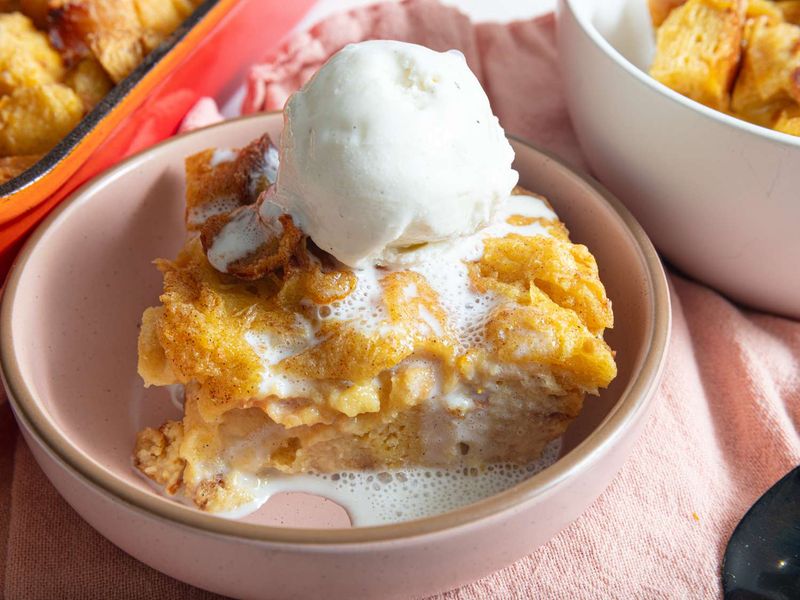
Bread pudding transformed stale bread into a delightful dessert. With milk, eggs, and spices, it became a rich, comforting treat.
Baking melded flavors, offering warmth and sweetness. Bread pudding was not just a way to avoid waste; it was an opportunity for creativity. Through simple ingredients, colonists crafted a dessert that captured the essence of home.
26. Syllabub

Syllabub, a frothy delight, was a colonial favorite. Made with cream, wine, and sugar, it was a light and refreshing treat.
Served in elegant glasses, it added sophistication to gatherings. Its airy texture and sweet flavor made it a popular choice for celebrations. Syllabub was more than just a dessert; it was a reflection of colonial elegance and festivity.
27. Pigeon Pie

Pigeon pie, with its savory filling, was a colonial delicacy. This pie combined tender pigeon meat with rich gravy under a flaky crust. Its preparation required skill, showcasing culinary expertise.
The pie’s hearty flavors offered comfort and satisfaction. Pigeon pie was more than a meal; it was an expression of the colonists’ ability to elevate simple ingredients.
28. Trout
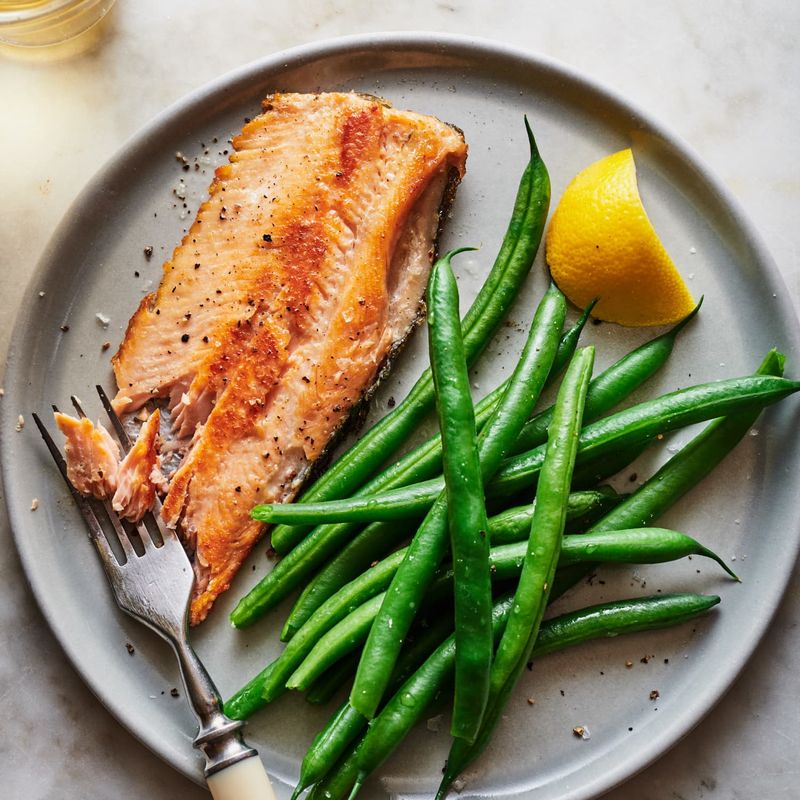
By the rivers, trout was a sought-after catch. This freshwater fish, often grilled or baked, offered a delicate, flaky texture. Its preparation highlighted the natural flavors, needing little more than herbs and lemon. Trout was a reminder of the abundant resources the land offered.
Eating trout was not just a meal; it was an experience of nature’s generosity.
29. Rice Pudding
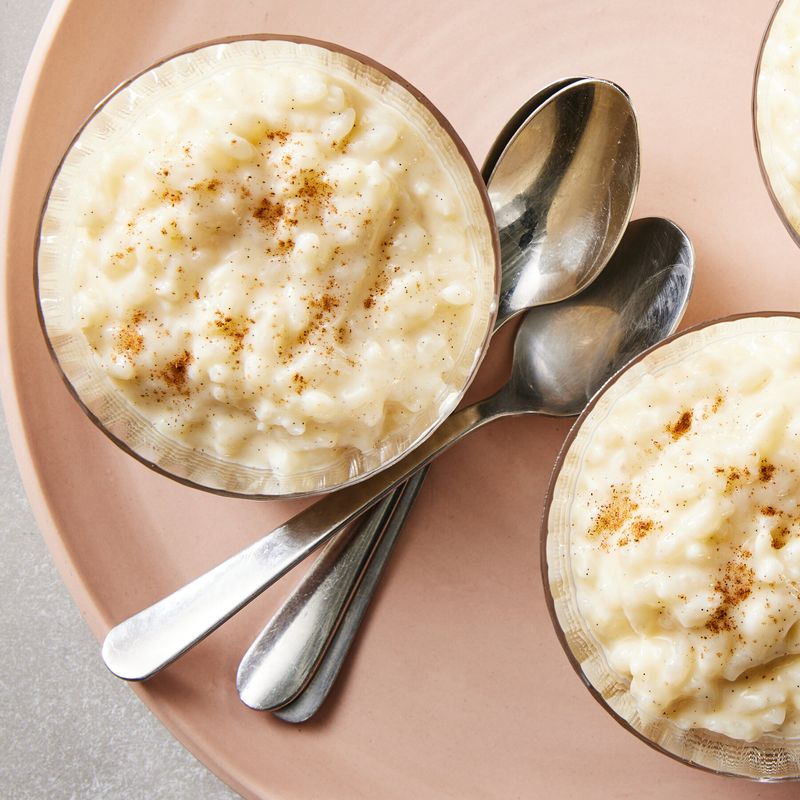
Rice pudding, creamy and comforting, was a colonial favorite. Made with rice, milk, and spices, it offered a rich, warming dessert. Its flavors, enhanced by cinnamon or nutmeg, enveloped diners in comfort.
Rice pudding was more than just a way to use rice; it was a testament to the colonists’ creativity in transforming simple ingredients into memorable treats.
30. Stinging Nettle Soup
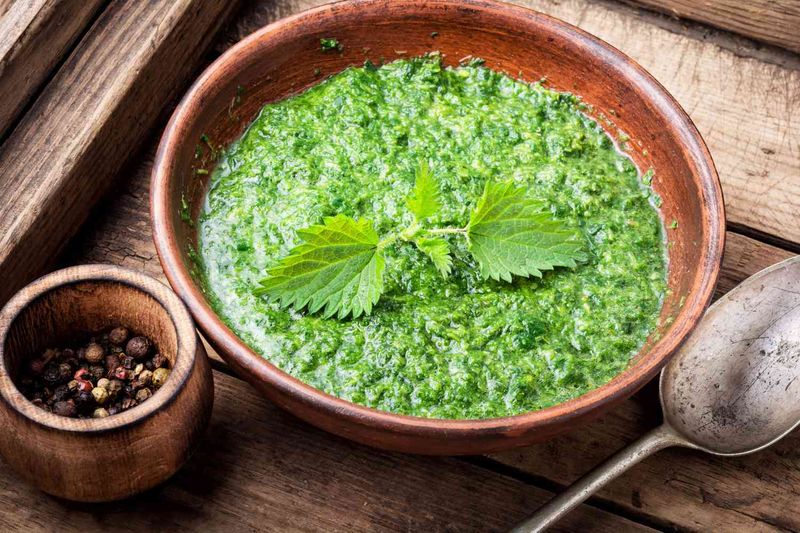
Stinging Nettle Soup was a surprising staple in colonial kitchens. Despite its prickly nature, stinging nettle was cherished for its nutritional value. Colonists would harvest the young leaves in spring, transforming them into a nourishing soup.
The process required careful handling to avoid irritation. Once cooked, the nettles lost their sting, offering a spinach-like flavor. This soup was not only nutritious but also a testament to the colonists’ resourcefulness.

